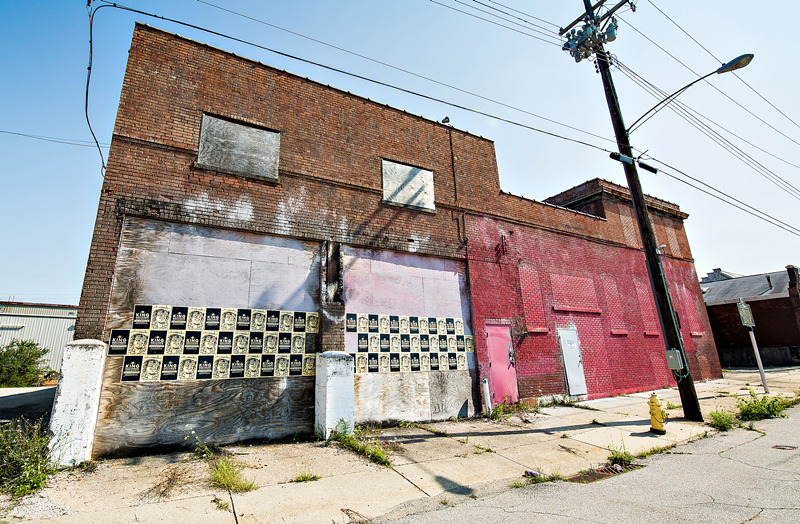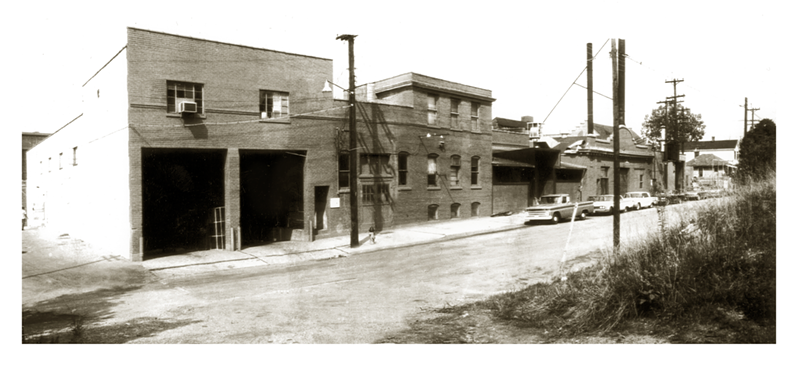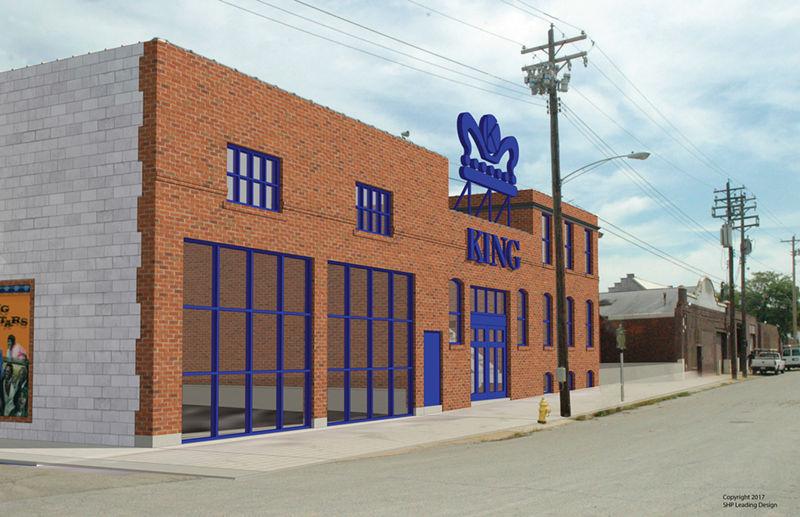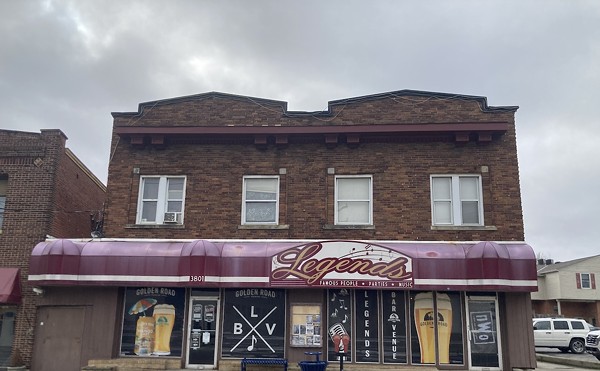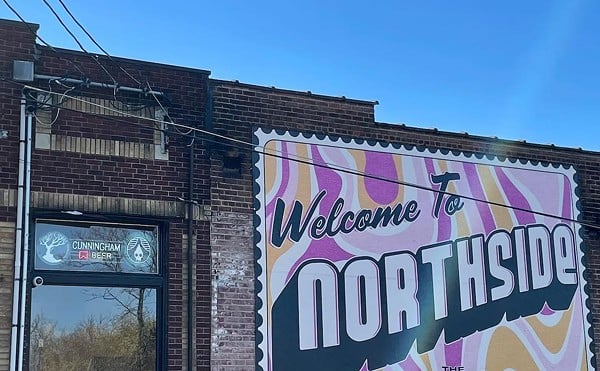It may not be as big an event as BLINK Cincinnati or Oktoberfest yet, but the annual King Records Month is rapidly becoming a genuine festival. In fact, in its sixth year it can no longer even be contained in a single month, as the events are becoming as numerous as the number of hit recordings made by King’s greatest star, James Brown, or the number of classic songs first recorded by King artists — like Little Willie John’s 1956 version of “Fever,” later covered successfully by Peggy Lee.
King Records Month is supposed to occur in September — it was September 1943 when King founder and Cincinnati native Syd Nathan recorded the first songs by Country singers Grandpa Jones and Merle Travis to be released by his new record company, which went on to be a pioneer in the development of Rock & Roll by bringing Country and R&B together. King was based on Brewster Avenue in Evanston, in buildings still there but long unused as a record company.
This year the celebrating of the “month” starts early — next Saturday in fact, with the first Celebrate the King: The Gala, a ticketed event at Over-the-Rhine’s Memorial Hall with special guests, live music and the presentation of Lifetime Achievement Awards to key figures in King’s history: the late Henry Glover, an A&R executive and producer who was an early black executive in the recording industry, plus important King musicians Bootsy Collins, Philip Paul and Otis Williams. The design company We Have Become Vikings is organizing the event; its co-founder Jason Snell did some King-related design work for projections on the exterior wall of downtown’s St. Xavier Church during 2017’s massively successful BLINK Cincinnati.
“The idea for the gala started over beers with two people active in (the King Studios project),” Snell says. “I’d just be sitting there and go, ‘What? That happened? No.’ Just being a fan of the music coming out of here and not really knowing a tenth of what happened… it gives me goosebumps.”
King Records Month activities also continue well past September with two high-profile events. On Oct. 25, the Cincinnati Preservation Association is bringing in Terry Stewart — the former director of Cleveland’s Rock and Roll Hall of Fame — to speak at its 23rd Annual Fall Forum Luncheon on the importance of preserving King’s legacy.
At CityBeat’s 2008 Cincinnati Entertainment Awards’ tribute to King, Stewart came to town and famously said at the event, “There’s not a more important piece of real estate in musical history than the building over there on Brewster. If you folks don’t remember and preserve it, shame on you.”
At the urging of board member Margaret Valentine, Cincinnati Preservation decided to focus this year’s lecture on King, a break from broader topics of the recent past.
After that, Cincinnati Playhouse in the Park debuts the long-awaited world premiere of KJ Sanchez’s play, Cincinnati King, on Nov. 3, which has been in development for five years as she researched the label’s history and its impact on the community. (The play runs at the Playhouse’s Shelterhouse Theatre through Dec. 23.)
September itself is packed with programming, from a serious panel discussion Sept. 5 at the Mercantile Library on Syd Nathan’s place in music history to the goofy fun of “The World’s Largest Twist Dance” on Sept. 7 at Great American Ball Park, following the end of a Cincinnati Reds’ game and before fireworks. King artist Hank Ballard had the first recording of “The Twist” in 1959, although it wasn’t until Chubby Checker covered it in 1960 that it became a massive hit and enduring pop culture touchstone. (See here for more events happening during King Records Month and beyond.)
Structural Security
All this is remarkable, when you consider that King Records lost its founder way back in 1968, when Nathan died, closed its Cincinnati studio/offices on Brewster in 1971 and essentially disappeared from the city’s consciousness after a Nashville company bought its assets. It’s been a long, slow process to make Cincinnatians aware.
But neither the increase in the breadth and duration of events nor the easy peg of a 75-year anniversary is the only reason why this year’s annual King Records celebration/observation is so much bigger than the past five.
In April, Cincinnati City Council approved a land swap with the existing owner of the former studio property in Evanston, who had been threatening demolition. The city had made the space a historic landmark in 2015. The transaction was completed this summer, and the city now owns King’s old studio/office at 1532-36 Brewster Ave. That means that the owners of King Records’ home are the citizens of Cincinnati, and they can now begin to plan for using the site to honor the past and possibly play a part in the community’s future. (Another part of the King property, 1538-40 Brewster, which held some of the manufacturing facilities such as record pressing, is still in private hands.)
“It is now an important public asset,” says Greg Koehler, economic development supervisor with the city. “We just hit this milestone of finally getting control over the original recording studio. Now we can talk seriously about getting this big project to happen. It’s a big lift — like a small-scale version of Music Hall or Union Terminal.”
Elliott Ruther, a co-founder of the nonprofit Cincinnati USA Music Heritage Foundation that advocated for saving the building, says, “Here’s a truly significant spot where culture was created that had an impact on the world.”
People involved in King preservation efforts say that it isn’t just its contribution to American music that merits its remembrance. Owner Nathan was way ahead of the rest of society in running an integrated business. As Darren Blase, a co-owner of Shake It Records who studied King Records as an undergraduate at the University of Cincinnati, explains: “(King) had an integrated baseball team within the company, but when they played in the greater industrial league, they had to break into a black and a white team.”
Before efforts can start on the restoration of the King site, it first needs to be protected structurally due to the wear of time and the elements.
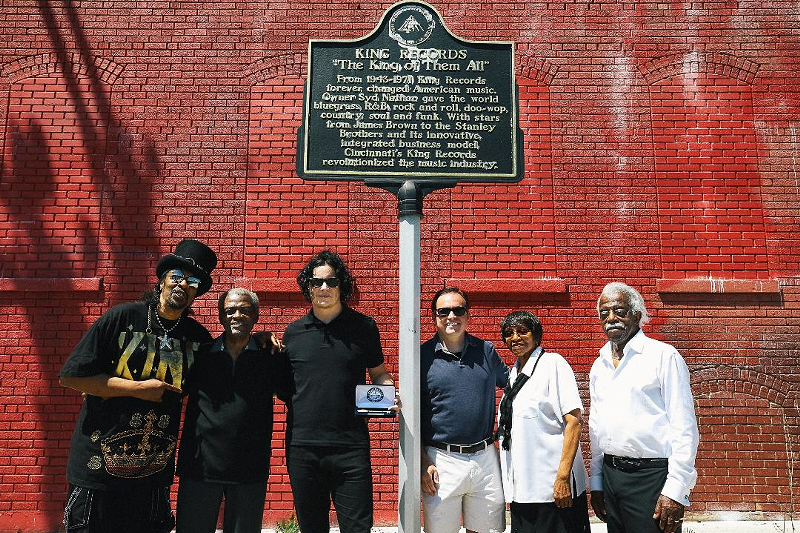
“Short term, we hope to get a new roof on it before the end of year,” the city’s Koehler says. “It’s essentially missing half a roof. It’s been deteriorating; it’s essentially in abandoned condition.”
He says such roof repair will cost approximately $500,000 and will include new rafters and carpentry to support the roof. The building also needs some asbestos mitigation.
“That means you won’t be able to grow vegetables inside the building because it has a complete roof on it,” jokes Tim Riordan, the secretary-treasurer of King Studios, a nonprofit with the stated goal of exposing and energizing King’s legacy while also supporting efforts to spur revitalization in Evanston.
Riordan might have some useful contacts in that regard — he is a former Cincinnati assistant city manager and former Dayton city manager.
To work with the city on long-term plans, four nonprofit community groups that have been involved in King preservation efforts have formed a steering committee to make recommendations. Besides King Studios and Cincinnati USA Music Heritage, Evanston Community Council and the Bootsy Collins Foundation are involved. They are considering forming a new nonprofit organization that could conceivably be in charge of creating a new use for the site and supervising a fundraising campaign.
Concurrently, Cincinnati Preservation has been coordinating work on an application to get the site on the United States Department of Interior’s National Register of Historic Places. That could help with funding — both the federal and state governments provide sizeable tax credits for the restoration of historic properties.
Paul Muller, Cincinnati Preservation’s executive director, says that kind of funding already has been used for work on such public entities as Music Hall, Union Terminal and Memorial Hall. That the King site may not be their architectural equal doesn’t matter, he says.
“Preservation is about much more than bricks and mortar,” he says. “It’s about the lives of people who create things. (Historic buildings) become useful marks for people to tell our cultural history and how we came to be as a society.”
Once and Future King
The initial steps being taken are about keeping the King building structurally secure. But the ultimate goals being discussed for the space are about much more than keeping King alive in an empty, worn-but-architecturally-sound memorial.
“Long-term demands a pretty extensive renovation of the building,” Koehler says. “That gets into things like a museum, historic artifacts on display, a studio, community space. That gets into the millions of dollars. That’s really what a lot of people in the community want to see happen in the long run, and I do believe it’s doable.”
Because the vision of what King should be is still in the early stages, Koehler says concrete fundraising efforts aren’t in place yet. But he says the plan for King to be something living and breathing in the community of Evanston is more than notional, because all four of the nonprofit stakeholders “have coalesced around that vision.”
“This would be a public memorial that we think would have a pretty significant national and international audience, as well as a local one,” Koehler says. “And there are some significant national and international recording stars interested in this and may help with fundraising at some point. And there’s a target list of major foundations as well.’’
There are some early conceptual designs that were done at King Studios’ request, but are not meant to be final. SHP Leading Design, a Norwood firm whose executive vice president, Thomas Fernandez, sits on King Studios’ board and is also on the steering committee, earlier created renderings of a building that show space for exhibits, performances, an airy room with tables and chairs and a wall lined with old King vinyl albums. There’s also a draft of a reimagined Brewster Avenue between King and Montgomery Road in Evanston that shows it turned into a colorful walking King timeline, with historic markers on the side.
Earlier, King Studios had pursued plans for a complex on Montgomery Road, in the business heart of Evanston.
“The idea in a perfect world is to still have a facility on Montgomery that’s a welcome center, maybe a record store and gift shop, and then take a cart down Brewster or walk to the original building,” says Chris Schadler, a board member of King Studios.
There is also much feeling that a revived King Records building should serve residents of Evanston, especially students, by offering music education and being a source of community pride.
There is another concern. Some feel that if and when the King site gets its second life with a museum component, it shouldn’t be a “top-down” one that solely interprets the company’s history through the eyes of the movers and shakers who owned it. There needs to be a “people’s history,” one that honors and respects all the musicians and other workers who helped create what King became.
To that end, Kent Butts — vice chair of both King Studios and the new steering committee — is trying to keep those musicians and employees still alive (or surviving family members) aware of what’s happening as the King revival grows.
“Many of them didn’t have a clue; they thought it was over with King,” Butts says. “I want to get the legacy individuals — mostly families of artists — to understand there is something here and that we’re thinking about them. It needs to be understood for history’s sake what their father or mother did for king.”
Butts has a personal stake in this — his father, Otis Williams, recorded one of King’s greatest hits, the R&B/Doo-wop smash “Hearts of Stone,” with the Charms in 1954, and still performs.
Philip Paul, a King Studios board member who became a session drummer at King in the 1950s, also believes respect must be paid to the label’s forgotten musicians. He keeps a list of lesser-known King musicians he doesn’t want to see forgotten, such as session guitarist Freddie Jordan.
“If we couldn’t get the chord changes together, they’d send for Freddie Jordan and he’d put it together,” Paul says in praise of the musician. “I promised his wife that if I got an opportunity, I’d make sure he would be honored.”
While all this is going on, national and international interest continues to grow as more is learned about the early and influential Country and R&B records that came out of King. A string of visiting Rock musicians have paid their respects in recent years — Paul McCartney, Nick Lowe, Jack White, Billy Gibbons and more.
“We’ve always said, and there is tons of evidence to support it, that King can sustain a claim to being the birthplace of Rock & Roll,” Schadler says. “I’ve always said there should be billboards on Interstate 71 and 75 that say, ‘Welcome to Cincinnati, the Birthplace of Rock & Roll.’ ”
That may happen soon.

